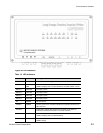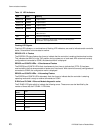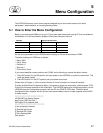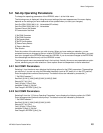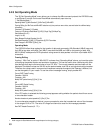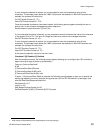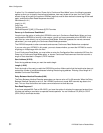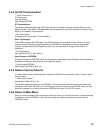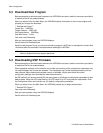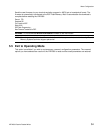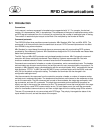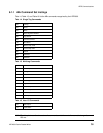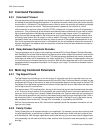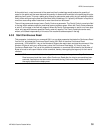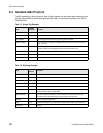Menu Configuration
LRP2000 Passive Reader/Writer
52
5.2.4 Set RF Communication
*** Set RF Communication ***
RF Communication
Enter Tag Category
Save Changes to EEPROM
RF Communication
Fast Mode or Standard Mode sets the RF data rate from the reader to the tag and should be set to the
default condition “Fast Mode.” Standard Mode was implemented to meet strict certification emission limits,
which is not needed in most countries.
***RF Communication? ***
RF Communication? [0] Fast Mode* [1] Standard Mode 0
Enter Tag Category
The LRP2000 support ISO15693 tags. The LRP2000 allows you to specify Philips, Infineon, or Texas
Instruments tags. Specifying a tag type allows the LRP2000 to understand the memory organization,
features, and performance of the tag being used. Only one manufacturer’s tags can be used in an
installation.
***Enter Tag Category***
Enter Label Type: [1] SLI, [2] Tag-it, [3] My-D
Save Changes to EEPROM
Saving the changes to EEPROM makes the configuration setting permanent. Otherwise when the power is
cycled the configuration setting returns to the previous setting.
***Save Changes to EEPROM***
Save Changes to EEPROM? [0] No [1] Yes
5.2.5 Restore Factory Defaults
It is often helpful during troubleshooting to restore the LRP2000 to known default values. To do so, select 1
from this menu:
*** Restore Factory Defaults ***
Restore Factory Default? [0] No [1] Yes
The restored defaults are saved to the EEPROM. The communication defaults can also be restored by
placing the main board DIP switch 5 in the ON position and then restarting the LRP2000. After you have
saved any changes, you must re-initialize the LRP2000 with switch 5 in the OFF position.
5.2.6 Return to Main Menu
When you have completed your configuration, entering 5 returns you to the initial menu. Unsaved changes
are effective until the LRP2000 is reset. Saved changes are loaded automatically the next time the
LRP2000 is reset.



